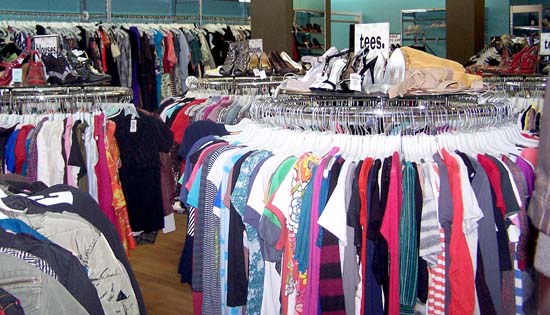There’s a sense of delirium when setting foot into a Forever 21.
The senses are assaulted with racks and racks of trendy clothing, from florals to caged heels and every interpretation of leggings one can possibly imagine. The seemingly unlimited stock of plaid lumberjack shirts is alarming, and crowds huddle around the stacks of ripped skinny jeans for a mere $12.80 like ravenous animals.
This is the excess commonly known as fast fashion.
Fast fashion is the manufacturing of affordable and trendy clothing for the masses, reproducing fashions straight off the runways for a larger audience. The aforementioned Forever 21, Sweden-based H&M and Spain-based Zara are the retail clothing chains that reign as the royalty of fast fashion.
While the economic benefits seem to be twofold for the consumer and the company, the environmental aspects of this have not been quite as beneficial. For example, H&M has been criticized of late for throwing out unsold clothing at its Manhattan location, punching holes in the items so that they could not be resold or worn. H&M stated that the unsold items had been damaged.
“I think that’s just ridiculous,” UCLA Fashion and Student Trends President Aimee Sorek said. “There are so many people in third world countries without clothes, and there are so many ways to donate clothes to charity.”
The U.S. Environmental Protection Agency estimates that 12.4 million tons of textiles that were generated in 2008 became part of the municipal solid waste system.
Kristin Yamada, a molecular toxicology graduate student and a teaching assistant for the “Business and Natural Environment” class, described the waste of garments as being unable to decompose.
“With cheap clothes, people don’t keep their clothes as long, wear it like five times and then find a hole or something and throw it away. If (the clothes) go into the landfill, it’s unlikely to biodegrade in a way that a landfill is structured,” Yamada said. “They compress all the waste, and no oxygen gets into where the waste is compressed, so it can’t break down even if it’s cotton.”
So those bold neon-lettered T-shirts that were thrown out when nu-rave fatigue set in won’t even die in a landfill, much less in the malls of America.
Cheap trends aside, high-fashion designers have also jumped on the fast fashion bandwagon, such as Karl Lagerfeld, Rodarte and Alexander McQueen, who have collaborated with mass retailers such as H&M and Target to create designs for a wider audience and for more profit.
The benefits are reciprocal for both the designer and the retailer; the designer gets mass recognition, and the retailer gets more consumers.
Consumers also gain a piece of exclusivity that they previously could not afford. However, some designers may go into these collections haphazardly as a way to generate profits, and may be criticized for selling out.
Stevie Mackenzie-Smith, writer for the fashion Web site Discotheque Confusion and sales assistant at London-based TopShop sees these designer collaborations as a way to generate a marketing base.
“It’s true that designer diffusion lines can be very hit-and-miss,” Mackenzie-Smith said. “But it’s very important for designers to be able to cultivate a younger fan base. In a way they’re preparing their next generation of consumers.”
The cessation of fast fashion won’t come anytime soon, what with the economy of the country today.
However, there are ways to stanch the flow of the excessive amounts of clothes bleeding into landfills and the closets of the average young person.
The advent of consignment stores are a way to recycle and buy clothing without the guilt of going through clothes like a box of tissue. Secondhand clothing stores such as Westwood’s Buffalo Exchange offer an alternative to the fast fashion chains, with affordable clothing and the possibility of reselling excess clothes for a little extra dough.
“Shopping at secondhand clothing stores and vintage stores is like fashion at a discount, like buying from someone else’s closet,” Westwood’s Buffalo Exchange store manager Alison Vasiloff said. “That way, instead of buying something and throwing it away, you can use an outfit several times and still resell it.”
On the other hand, another way to cut down on fast fashion excess is to simply shop less.
“There is a lot to be said for the old-fashioned approach of buying less often ““ five pieces a season, for example, and knowing that they’ll last for years to come,” Mackenzie-Smith said. “It’s a tricky one, though, because if everybody were to do this, it would have a huge impact on the economy of fast fashion.”
